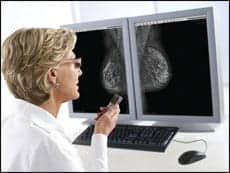
Service contract management is one area of the certified clinical engineer (CCE) examination in Service Delivery Management. The topic of Service Delivery Management comprises 18% of the CCE examination. This article and future articles will discuss the different aspects of service contract management.
The hospital must plan for the service of equipment during the equipment acquisition phase, not when the service problems start appearing. Depending on the type of equipment (usually high-end imaging and laboratory equipment), the hospital should have service contracts negotiated before the equipment is purchased. After the period of warranty coverage, the service can be handled by any of the following four sources:
- The original equipment manufacturer (OEM);
- Multivendor services (MVS) by an OEM;
- An independent service organization (ISO); and
- An in-house biomedical/clinical engineering department.
Following are the main advantages and disadvantages of service provided by these four sources.
OEM Service
Advantages:
- The OEM service personnel are usually the most qualified to service their own brand of equipment;
- A high level of training of the OEM service technician;
- Access to proprietary product documentation and service tools;
- Access and availability of quality spare parts; and
- More field service experience working with their own brand of equipment.
Disadvantages:
- High cost;
- Usually rigid pricing structure; and
- Contract limitations.
MVS Offered by OEMs
Advantages:
- Single-source service contract bundling;
- Lower cost (varies, depending on the equipment count and type);
- Simplifies the management of multiple service vendors.
Disadvantages:
- Limited training/experience of the service technician in servicing a second OEM’s brand of equipment;
- Restricted access to proprietary product documentation and service tools;
- Limited access to quality spare parts; and
- Quality of service provided to other manufacturers’ equipment may not be as high as it will be for the OEM’s own brand of equipment.
ISO
Advantages:
- Lower cost;
- Single-source service contract bundling; and
- Simplifies the management of multiple service vendors.
Disadvantages:
- Limited training/experience of the service technician in servicing the OEM’s brand of equipment;
- Restricted access to proprietary product documentation and service tools;
- Limited access to quality spare parts; and
- Quality of service provided may not be as high as provided by OEM service.
In-house Biomedical/Clinical Engineering
Advantages:
- Low cost;
- Fast response; and
- No travel time/cost.
Disadvantages:
- Limited training/experience of the service technician in servicing the OEM’s brand of equipment;
- Restricted access to proprietary product documentation and service tools;
- Limited access to quality spare parts; and
- Quality of service provided may not be as high as provided by OEM service.
Arif Subhan, MS, CCE, is the chief biomedical engineer, VA Nebraska-Western Iowa Health Care System, Omaha, Neb; adjunct assistant professor, biomedical engineering, University of Connecticut; and a member of 24×7’s editorial advisory board. The suggestions and views expressed in this article are of the author. They do not represent the views of the Department of Veterans Affairs or the University of Connecticut. For more information, contact .
Review Questions
- The best service contract management practice for high-end equipment in the hospital is to____.
- Plan for the service of equipment during the equipment acquisition phase
- Find the service provider when the equipment fails
- Find the service provider after the period of warranty coverage ends
- None of the above
- The advantage (s) of original equipment manufacturer (OEM) service is that the OEM____.
- Service personnel are usually the most qualified to service their own brand of equipment
- Has access to proprietary product documentation and service tools
- Has access to and availability of quality spare parts
- All of the above
- The disadvantages of multivendor services offered by OEMs is____.
- Limited training/experience of the service technician in servicing a second OEM’s brand of equipment
- Restricted access to proprietary product documentation and service tools
- Cost and access to quality spare parts
- All of the above
- The disadvantage of limited training/experience of the service technician is a common disadvantage in the following type of services____.
- Multivendor services offered by OEMs
- In-house biomedical/clinical engineering
- Independent service organizations (ISOs)
- All of the above
- The advantage of in-house biomedical/clinical engineering service is____.
- Fast response
- No travel time/cost
- Low cost
- All of the above
See the answer
See the answer
See the answer
See the answer
See the answer





